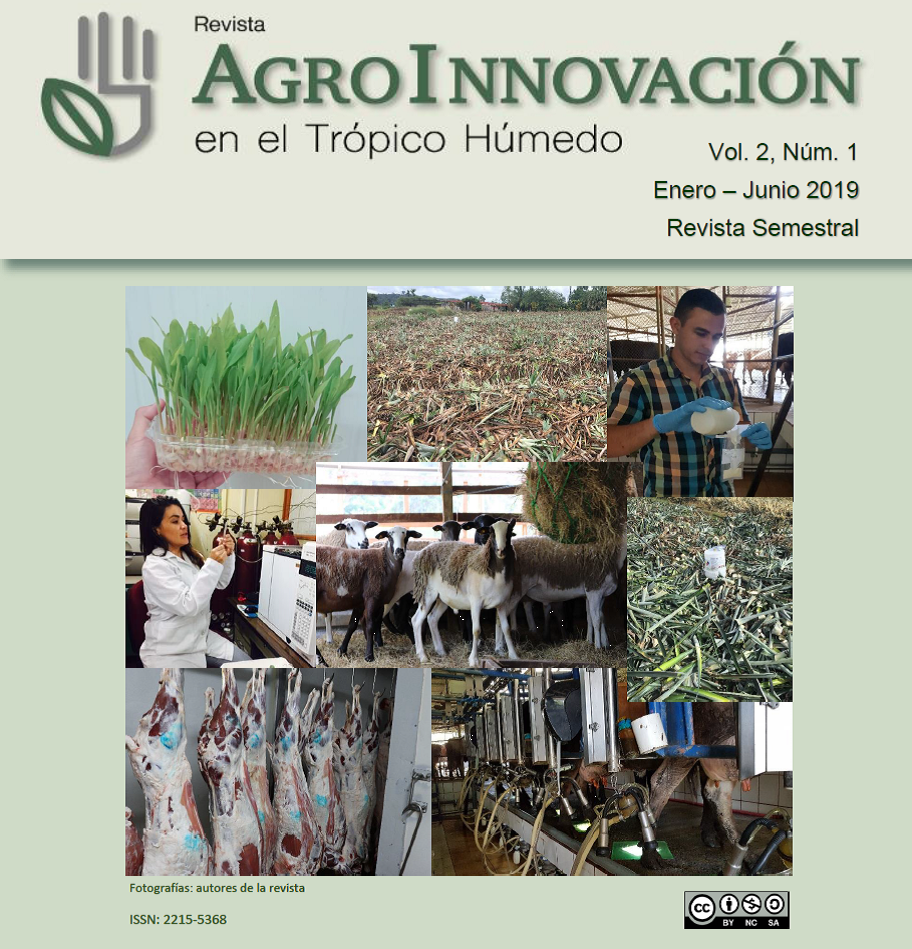Comportamiento productivo y composición de la canal de machos ovinos (Ovis aries) en Pérez Zeledón, Costa Rica
Contenido principal del artículo
Resumen
El objetivo de este trabajo fue evaluar el comportamiento productivo y la composición de la canal en corderos pesados y desarrollados en Pérez Zeledón, Costa Rica. Se analizaron once corderos castrados, alimentados con forrajes y suplementados con concentrados. Se registró el peso de los animales desde el nacimiento hasta 10 meses de edad aproximadamente. Los corderos se sacrificaron, se registraron los pesos de las canales y se realizaron mediciones morfológicas como longitud de la canal, ancho de tórax, longitud y perímetro de la pierna, así como el área de ojo de lomo y el espesor de la grasa dorsal en el lomo ancho (Longissimus dorsi). Los corderos evaluados presentaron un peso promedio al nacimiento de 2,7 kg, con ganancias de peso promedio diario de 163 g y un peso al sacrificio de 49,27 kg a los 302 días de edad promedio. El promedio de peso vivo en planta, canal caliente (CC) y canal fría (CF) fue 48 kg, 21,15 kg y 20,79 kg respectivamente. El rendimiento de la canal fue de 44,04% cuando aún no se presentaban pérdidas por oreo. El índice de compacidad fue de 0,71 para pierna y de 0,33 para la canal. Las pérdidas por oreo alcanzaron valores de 1,7%. En composición tisular se obtuvo en promedio 15,47 kg de músculo, 3,19 kg de hueso y 1,85 kg de grasa, con una relación músculo/hueso de 4,93 y músculo/grasa de 8,50. Los cortes del
lomo representaron el 15,4% del total del músculo, de la pierna el 28,3%, del cuarto delantero el 31,0% y de la falda + costilla el 25,3%. Los subproductos no comercializables representaron el 47,1% del peso vivo, de estos, el 4,8% correspondió a la cabeza, 2,2% a las patas, 12,6% al cuero y lana, 2,0% a las vísceras y el 25,4% al tracto gastrointestinal (TGI).
Detalles del artículo
Una vez que un manuscrito haya sido enviado a la Revista AgroInnovación en el Trópico Húmedo para su publicación, el autor o los autores ceden a la revista los derechos patrimoniales de dicho manuscrito.
El autor o los autores de manuscritos aprobados para su publicación autorizan a la Revista AgroInnovación en el Trópico Húmedo a editarlo, reproducirlo, distribuirlo, y publicarlo en formato físico y/o electrónico, incluido Internet.
La titularidad de los derechos morales sobre los trabajos objeto de esta cesión seguirá perteneciendo a los autores.

